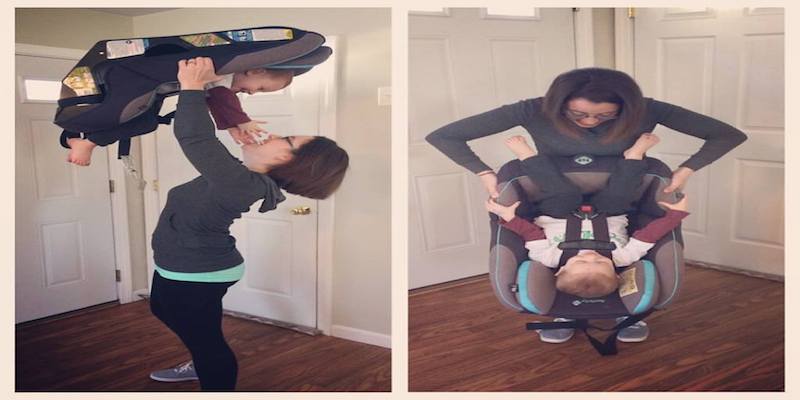- Study Says Most Parents Don’t Use Car Seats In Ride Share Vehicles Like Uber
- This 12-Year-Old Boy Is A Sophomore Aerospace Engineering Major!
- Fire Safety Experts Warn Of Hand Sanitizer Danger After A Mom and Kids Escape House Fire
- Recall Alert: Peaches May Be The Cause Of Salmonella Outbreak, 68 People Ill
- Summer Vacation In The Days Of COVID: Tips To Stay Safe
- How To Safely Grocery Shop During The Coronavirus Pandemic
- Michigan Teen With Vape-Related Illness Undergoes Double Lung Transplant
- Teen Kicks Off Anti-Vaping Campaign From Hospital Bed
- Teenager Receives Life Sentence For Strangling Sister To Death Over A Wi-Fi Password
- Toddler Falls To Death From 11th Deck of Cruise Ship
A Car Seat Safety Lesson Every Parent Needs to See


A Mom’s post to Social media has gone viral for her important lesson about car safety.
Of course no parent would ever want to see their child’s car seat being flipped upside down, however, Rachel McNamara wanted parents to consider a very important question about buckling their little ones in.
Rachel shared two images of her little one strapped into a car seat and being held both above her head and another flipped upside down. The question she wanted parents to consider – Would your child be protected if the car rolled?
Rachel isn’t telling parents they should literally flip their little ones each time they get ready for a drive to ensure that they are properly restrained but to remember some very important tips: “Remember that the chest clip should be at armpit level and the straps should be tight enough to pass the pinch test,” she wrote “[Parents] should feel confident that their child would be safe IF the car seat was flipped over in an accident. I think this is a great visual and shows just how important proper car seat use is.”
Even though every car seat is different and that parents should always read the manual first, Rachel reminds them that in most cases, the straps should be at or below their child’s shoulders when they are in a rear-facing seat. When they are forward facing, she says that the straps should typically be at or above their shoulders.
She also mentioned the “pinch test”, which is something that parents can do after the child is buckled in and the chest clip is in place. “You shouldn’t be able to pinch any of the strap between two fingers,” she recommended. “This test should be done near the shoulders. If you can pinch the strap here’s what to do: move the chest clip back down, tighten the straps, move the chest clip back up, and test again.”
Rachel also gave a warning that proper car seat installation and which direction your baby is facing are equally vital factors in car seat safety:
“There should be less than an inch of movement of the car seat at the belt/latch path. Always use the top tether when forward facing. Only uses the latch system OR the seat belt to install your car seat. Never use both (with the exception of a few brands).
Check your car seat’s manual. If you need help installing your car seat or have any questions about what seat would be best for your child or the best fit in your car, call your local Child Passenger Safety Technician (CPST).
Rear facing as long as possible is always the safest option. Both the NHTSA and AAP recommend rear facing to the MINIMUM of 2 years old. But ideally they should rear face until they max out the seat’s weight and height limits.
There is a common misconception that once a child’s feet can touch the back of the seat that they need to be forward faced because their legs could become injured in an accident. This is simply not true. Their legs are actually LESS likely to sustain injuries while rear facing. Some people may say “my child looks so cramped rear facing”. But truthfully toddlers are extremely flexible and can find very creative places to put their legs to get comfortable. Please consider extended rear facing your child. Car accidents are the leading cause of injury and death in children.”
To date, the post has been shared over 48 000 times.
Thanks for sharing Rachel.




0 comments